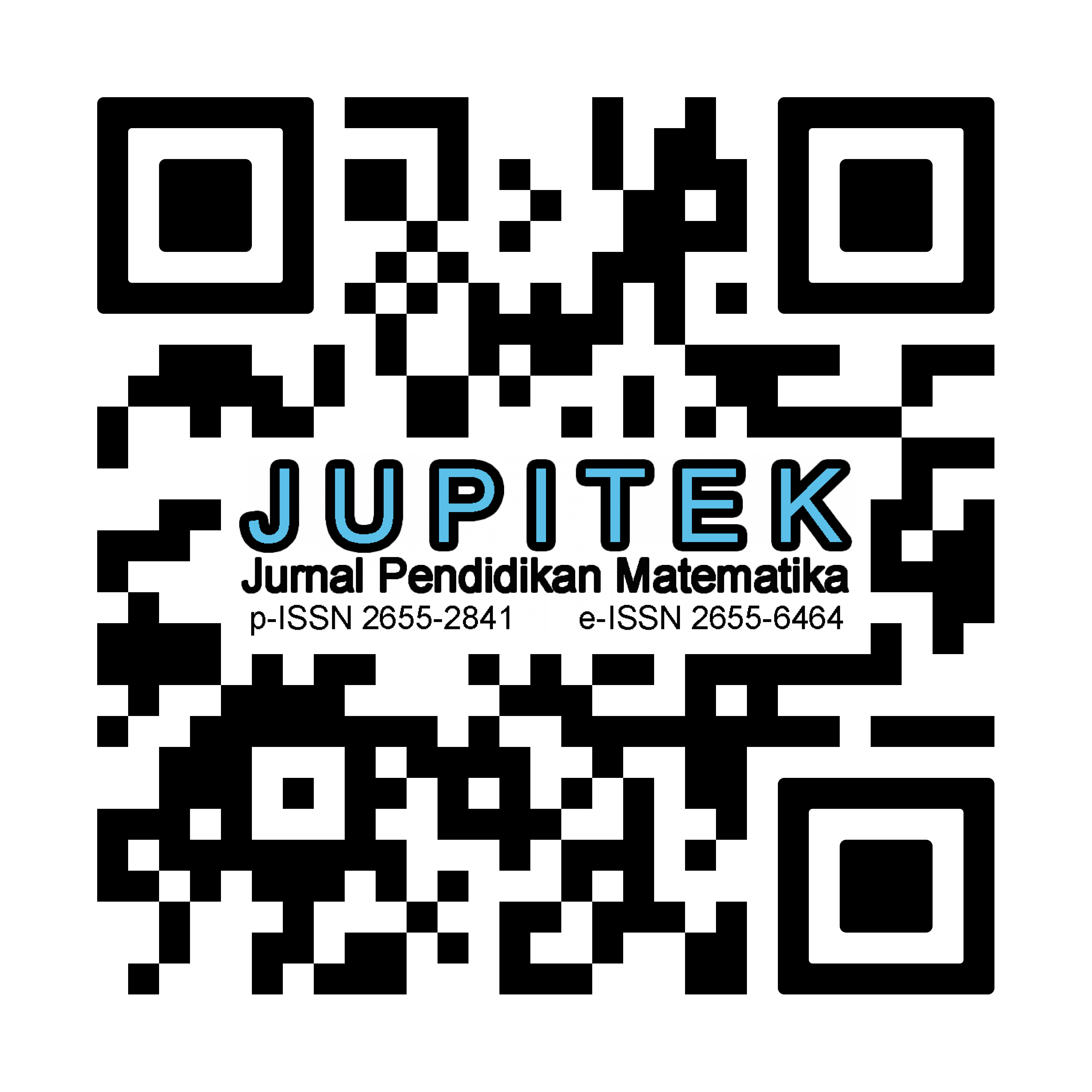DEVELOPMENT OF MATHEMATICS PICTURE STORY BOOK ON FRACTION MATERIAL FOR GRADE IV ELEMENTARY SCHOOL STUDENTS
Abstract
Mathematics picture story books are learning media that can help students learn mathematics content both independently or through active interaction in the classroom. This study aims to develop learning media for mathematics picture story books on Fraction material and determine its feasibility for grade IV elementary school students. This research is an R&D research with ADDIE model which consists of stages 1) analyze, 2) design, 3) development, 4) implementation, and 5) evaluate. The subjects in this study were 40 fourth grade students at SD Negeri 318 Maluku Tengah, SD Negeri 254 Maluku Tengah and SD Kristen Tiouw. Before being tested, this book was first validated by material experts and media experts. This research produces a product in the form of illustrated storybooks as a medium for learning mathematics on Fraction material. Based on the assessment of material experts get a validity percentage of 89% category "Very Valid" while the assessment of media expert validators get a validity percentage of 92% category "Very Valid" to be used in grade IV elementary students. Based on the response of students, it gives a practicality value of 93.86% in the "Very Practical" category for picture storybook media products. Based on the test results, the average student score is 71.77 and it is above the Minimum Completeness Criteria, meaning that the picture story book is considered "very effective" to be used publicly. Because it meets all the criteria, the picture story book is said to be "very feasible" to use. This picture story book can help students improve learning outcomes and foster student curiosity so as to increase understanding and reasoning about mathematics, especially fraction material
Downloads
References
Apriliani, S. P., & Radia, E. H. (2020). Pengembangan Media Pembelajaran Buku Cerita Bergambar Untuk Meningkatkan Minat Membaca Siswa Sekolah Dasar. Jurnal Basicedu, 4(4), 994–1003. https://doi.org/10.31004/basicedu.v4i4.492
Cramer, K. A., Post, T. R., & delMas, R. C. (2002). Initial Fraction Learning by Fourth- and Fifth-Grade Students: A Comparison of the Effects of Using Commercial Curricula with the Effects of Using the Rational Number Project Curriculum. Journal for Research in Mathematics Education, 33(2), 111–144. https://doi.org/10.2307/749646
Fahyuni, E. ., & Bandono, A. (2015). Pengembangan Media Cerita Bergambar Sebagai Upaya Meningkatkan Kemampuan Membaca Siswa Sekolah Dasar. Jurnal Kependidikan Dan Keislaman, 14(1).
Fatimah, A., & Maryani, K. (2018). Visual literasi media pembelajaran buku cerita anak. Jurnal Inovasi Teknologi Pendidikan, 5(1), 61–69. https://doi.org/10.21831/jitp.v5i1.16212
Fuchs, L. S., et al. 2021. Assisting Students Struggling with Mathematics: Intervention in the Elementary Grades. U.S. Department of Education. https://ies.ed.gov/ncee/wwc/PracticeGuide/26
Hasan, M. M. D. H. K. T. (2021). Media Pembelajaran. In Tahta Media Group (Issue Mei).
Khairiah, R. A., Hidayat, S., & Kosasih, E. (2020). Pengembangan Buku Cerita Anak Bermuatan Karakter untuk Pembelajaran Matematika di Sekolah Dasar. EduBase : Journal of Basic Education, 1(2), 13. https://doi.org/10.47453/edubase.v1i2.161
Kusumaningtyas, N., & Listianingsih, W. (2017). Pengembangan Media Cergam Untuk Meningkatkan Minat Belajar Matematika Pada Siswa Sekolah Dasar di Daerah Tertinggal. Paradigma: Jurnal Filsafat, Sains, Teknologi, Dan Sosial Budaya, 23(1). https://doi.org/10.33503/paradigma.v23i1.372
Mashuri, Sufri. 2019. Media Pembelajaran Matematika. Yogyakarta: Deepublish Publisher.
Mawanto, A., Siswono, T. Y. E., & Lukito, A. (2020). Pengembangan Media Cerita Bergambar untuk Melatih Kemampuan Berpikir Kreatif Siswa Pada Materi Pecahan Kelas II. Jurnal Cendekia : Jurnal Pendidikan Matematika, 4(1), 424–437. https://doi.org/10.31004/cendekia.v4i1.243
Noviarni, E., Ahlia, I., & Agustina, R. (2020). Pengembangan Bahan Ajar Matematika Menggunakan Pendekatan Realistic Mathematic Education (Rme). EMTEKA: Jurnal Pendidikan Matematika, 1(1), 24–35. https://doi.org/10.24127/emteka.v1i1.378
Nugraheni, N. (2017). Penerapan Media Komik Pada Pembelajaran Matematika Di Sekolah Dasar. Refleksi Edukatika : Jurnal Ilmiah Kependidikan, 7(2), 111–117. https://doi.org/10.24176/re.v7i2.1587
Plomp, T., & Nieveen, N. (2014). Educational design research. Handbook of Research on Educational Communications and Technology: Fourth Edition, January 2013, 131–140. https://doi.org/10.1007/978-1-4614-3185-5_11
Rosyadi, A. A. P. (2020). Development of interactive mathematic stories (BuCIM) based on dienes theory. Math Didactic: Jurnal Pendidikan Matematika, 6(2), 235–243. https://doi.org/10.33654/math.v6i2.678
Sadiman, A. S., Rahardjo, R., Haryono, A., Rahardjito. 2008. Media Pendidikan: Pengertian, Pengembangan, dan Pemanfaatannya. Jakarta: PT RajaGrafindo Persada.
Saputro, K. A., Sari, C. K., & Winarsi, S. (2021). Pemanfaatan Alat Peraga Benda Konkret Untuk Meningkatkan Motivasi Dan Hasil Belajar Matematika Di Sekolah Dasar. Jurnal Basicedu, 5(4), 1735–1742. https://jbasic.org/index.php/basicedu/article/view/992
Sari, Y., & Yustiana, S. (2021). Efektivitas bahan ajar cerita bergambar bemuatan religius terhadap prestasi belajar siswa kelas 1 sekolah dasar. Jurnal Ilmiah Pendidikan Dasar, 8(2), 175. https://doi.org/10.30659/pendas.8.2.175-185
Stohlmann, M., Yang, Y., Huang, X., & Olson, T. (2020). Fourth to Sixth Grade Teachers’ Invented Real World Problems and Pictorial Representations for Fraction Division. International Electronic Journal of Mathematics Education, 15(1), em0557. https://doi.org/10.29333/iejme/5939
Trimansyah, B. (2020). Panduan Penulisan Buku Cerita Anak. In Badan Pengembangan dan Pembinaan Bahasa (Vol. 1).
Umardiyah, F. (2020). Penerapan Pembelajaran Kontruktivisme Menggunakan Media Benda Konkret untuk Meninggkatkan Hasil Belajar Siswa pada Materi Geometri Bangun Ruang di SDN Karangmojo II. Jurnal Pendidikan, Pembelajaran, Dan Teknologi, 05(02), 85–90.
Widodo, S. A., & Wahyudin. (2018). Selection of Learning Media Mathematics for Junior School Students. Turkish Online Journal of Educational Technology - TOJET, 17(1), 154–160. https://eric.ed.gov/?id=EJ1165728

Copyright (c) 2024 Marlin Blandy Mananggel, Widya Putri Ramadhani, Yulian Hani Makaruku

This work is licensed under a Creative Commons Attribution-NonCommercial-ShareAlike 4.0 International License.
License and Copyright Agreement
By submitting a manuscript to Jurnal Pendidikan Matematika (JUPITEK), the author(s) certify and agree to the following terms:
- Originality and Authority: The submitting author is authorized by all co-authors to enter into this agreement. The manuscript describes original work that has not been published previously in a peer-reviewed journal, nor is it under consideration for publication elsewhere.
- Approval: Its publication has been approved by all author(s) and by the responsible authorities of the institutions where the work was carried out.
- Rights: The authors secure the right to reproduce any material that has already been published or copyrighted elsewhere.
- Licensing and Copyright: Authors retain the copyright to their work.
- License Grant: The authors grant Jurnal Pendidikan Matematika (JUPITEK) the right of first publication, with the work simultaneously licensed under the Creative Commons Attribution-NonCommercial-ShareAlike 4.0 International (CC BY-NC-SA 4.0).
- Self-Archiving: Authors are permitted and encouraged to deposit the published version of their article in institutional repositories, on their personal websites, and other academic platforms, with proper acknowledgment of its initial publication in Jurnal Pendidikan Matematika (JUPITEK).





.png)


